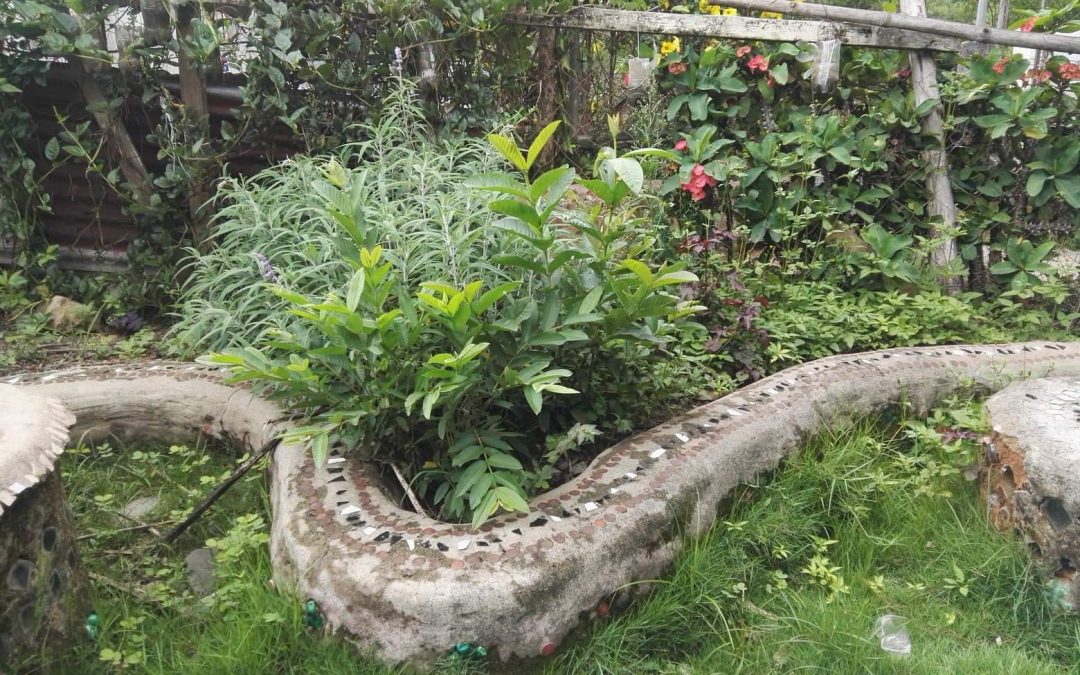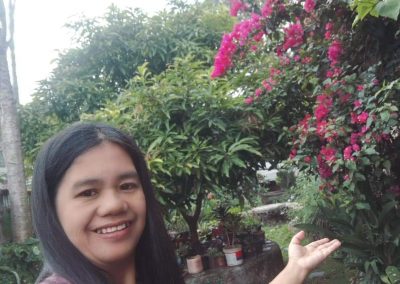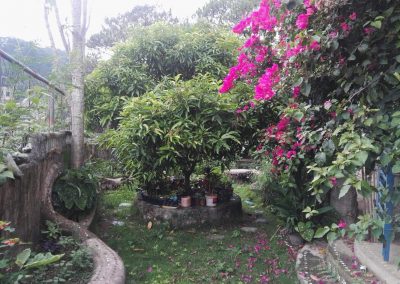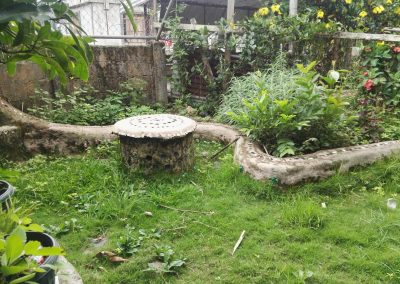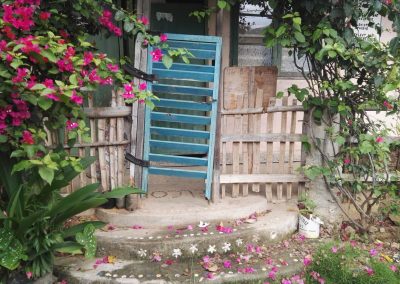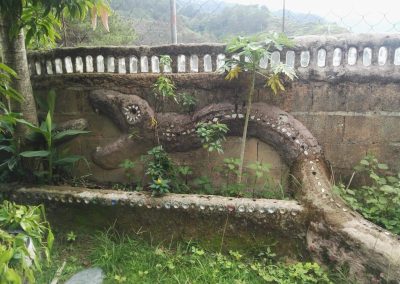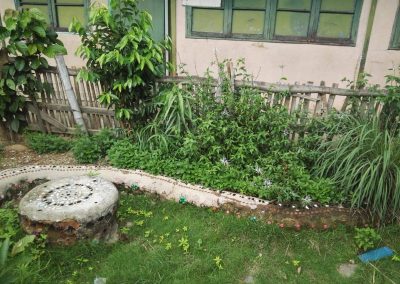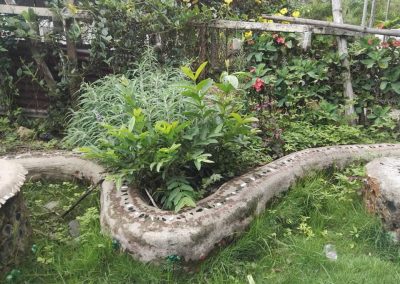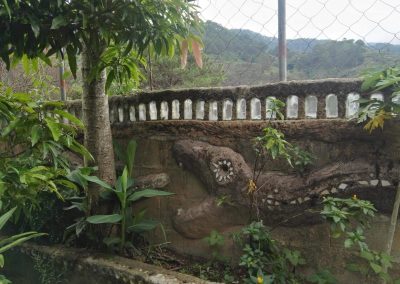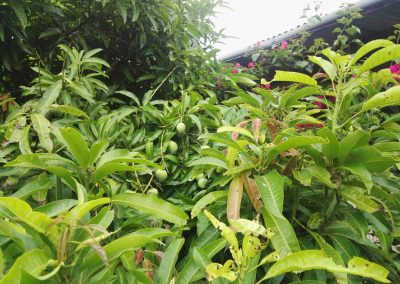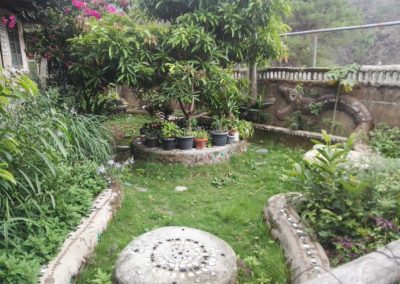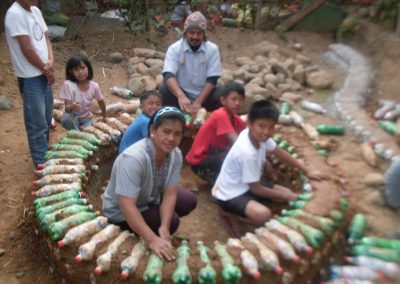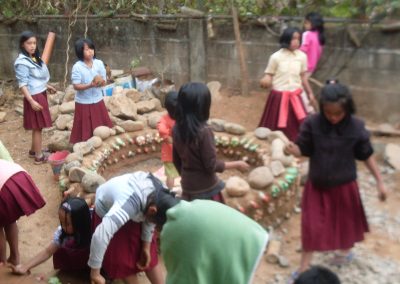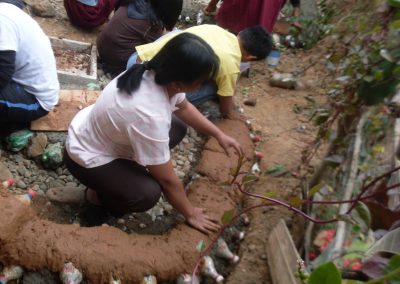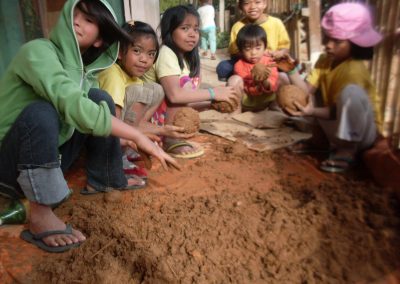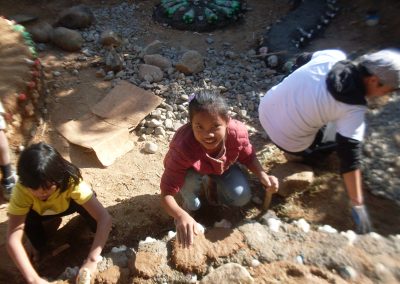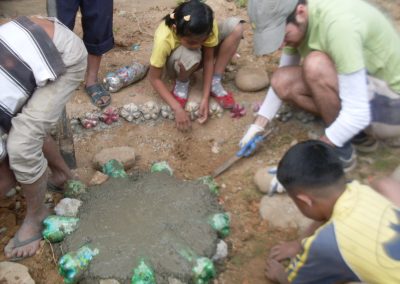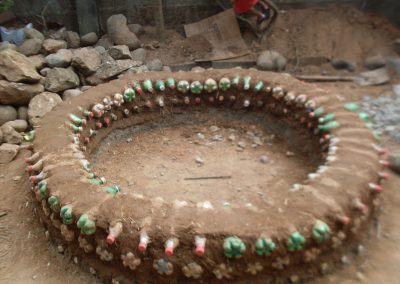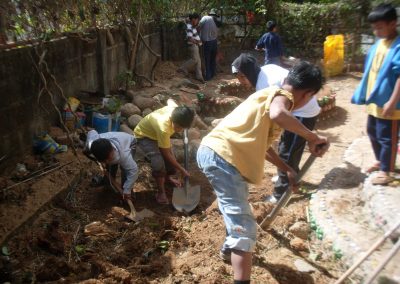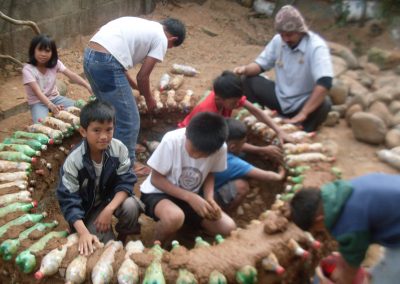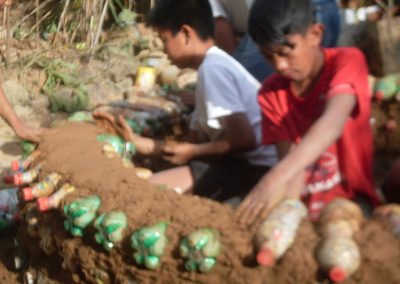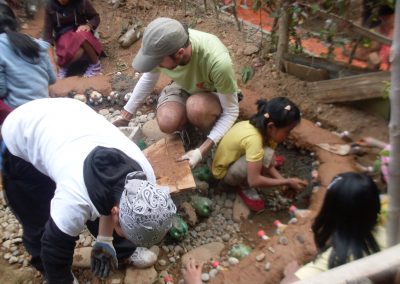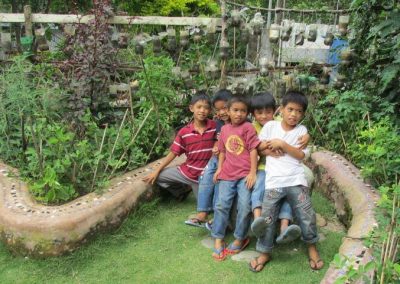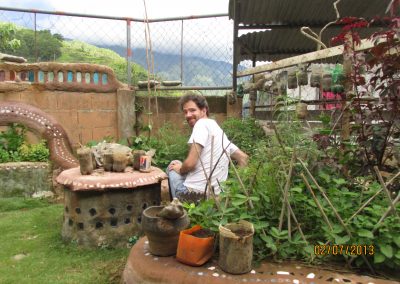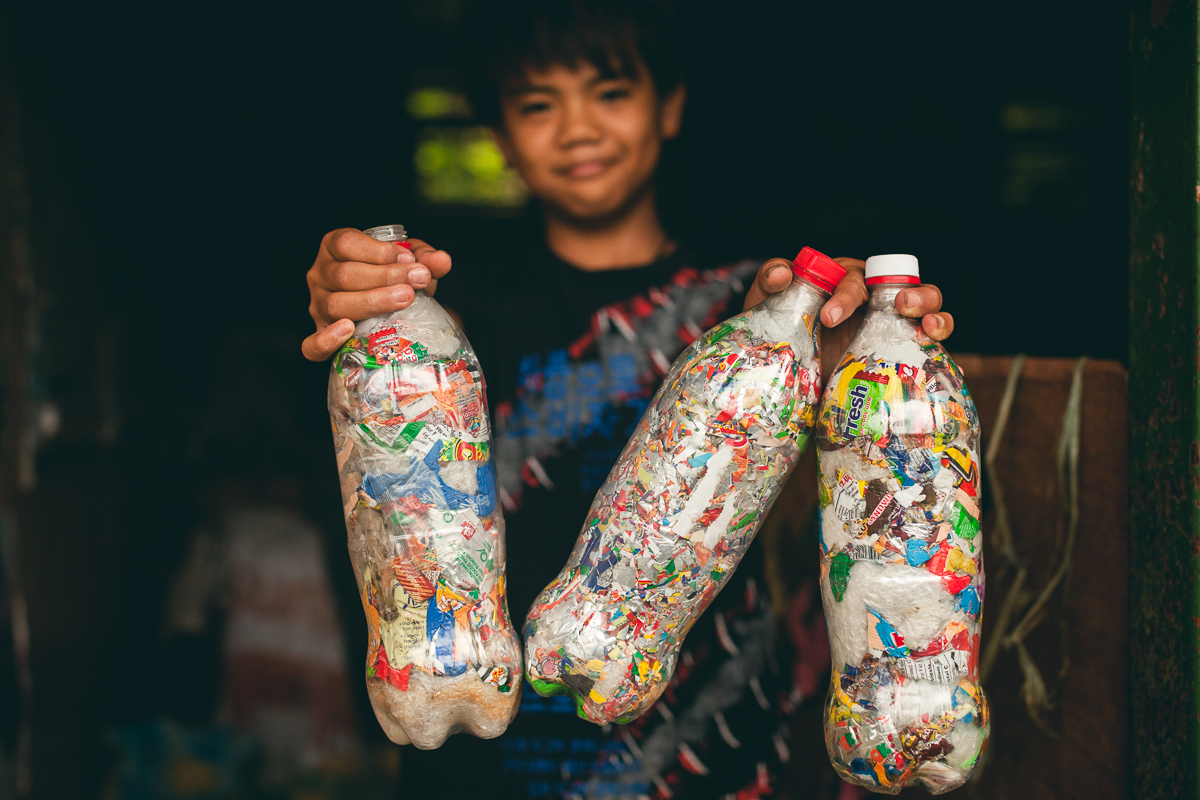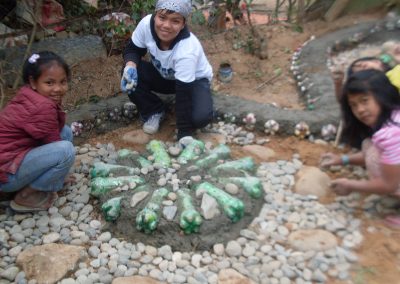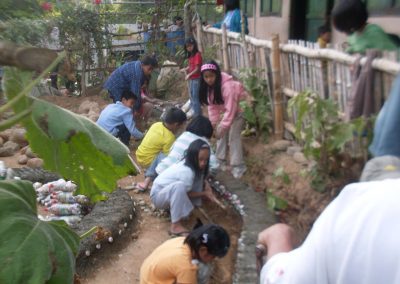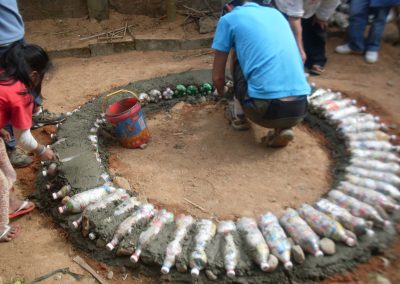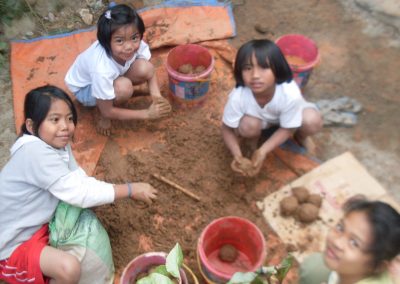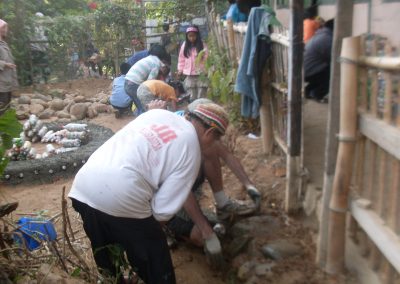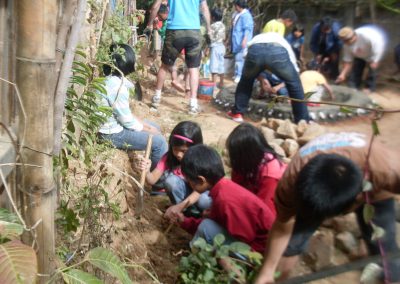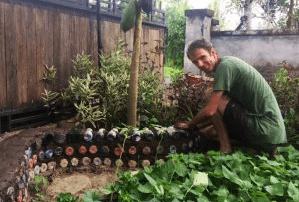Bottle wall
The color water has long since departed the bottles on the top of the fence… maybe that wasn’t the best idea!
Of course, one of the great things about paintings is that they can embody meaning, ideas and symbolisms that are carrying forth to inspire. Yet, in this way our food forest park more like a painting. It is an existential immersive experience of regenerative and permaculture principles! Those who experience the park, have a direct experience of these ideas and concepts.
And this is precisely why I remain so proud of it. Hundreds of students, parents and teachers all participated in the making of the park– either through their making and contribution of ecobricks, or their actual participation in making and laying the cob. Unlike the current sterile, zero-organic, plastic/metal playgrounds that now plague my country, this park immerses the players in organic experience. All the plants we choose are edible in some way– either the leaves, berries or fruit. So as the children run around, or sit and have their lunch, they can add a raw leave or berry to their diet.
I observed that there was a growing igorance and even fear of eating plants raw in the Philippines. To have this ignorance removed at a young age is fantastically valuable, and something that you just can’t teach in a normal classroom. Learning to eat wild and raw is also key to ecobrick lessons about manufactured plastic packed food we’d been teaching. Finally, those playing in the park experience fantastically ecobricks put to use, which provides the legitimization of continued ecobricking, rather than wasting, of plastic.
I am really excited to get back to building in this way. Its fundamental to our vision of deep plastic transition. We’re at last ready to start applying ecobricks and earth in Indonesia. Our first Earth and Ecobrick workshop happened last month, and I can’t wait to see more food forest play parks like this manifest through massive community collaborations everywhere.
Construction Photos from August 2013
The report can be found on Eccobricks.org/andrew
[fbcomments]

